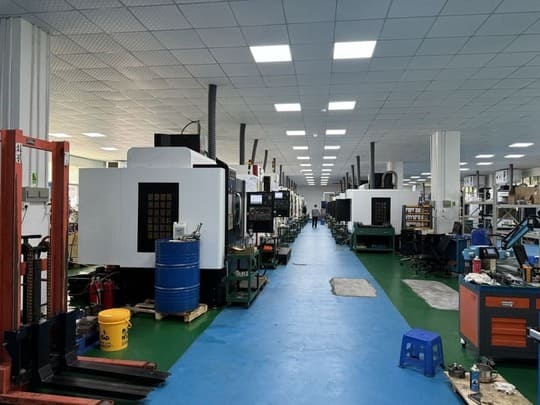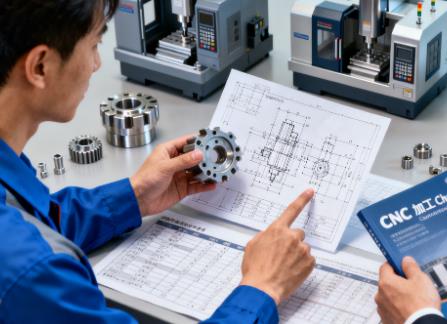When you need to transform a digital design into a high-precision physical part, CNC (Computer Numerical Control) machining is undoubtedly one of the top choices. Whether you are developing a new product, manufacturing critical components, or carrying out small-batch production, you will likely face several key questions: "How much does CNC machining cost?", "How long will it take?", and "Which supplier is the best fit for me?"
This article systematically answers these common questions, providing you with a clear and practical action plan.
1. How Much Does CNC Machining Cost?
"How much does CNC machining cost?" is one of the most frequently asked questions. The truth is, there is no standard answer, as costs depend on multiple factors. Understanding the cost structure is the first step to controlling your budget. The main cost drivers include:
Material Costs
This is the base cost. Aluminum (such as 6061 and 7075) is the most cost-effective option thanks to its machinability and excellent strength-to-weight ratio. That's why many people search for terms like "best CNC machining company for aluminum parts." Other materials, such as stainless steel, titanium, and engineering plastics, tend to be more expensive.
Machining Time
CNC shops usually charge by the hour. The complexity of the part is the decisive factor:
- Geometry: Complex 3D surfaces, deep holes, and fine features significantly increase programming and machining time.
- Tolerance Requirements: Ultra-high precision (e.g., ±0.01 mm) requires slower cutting speeds, finer tools, and repeated inspections—naturally driving up costs.
Post-Processing and Surface Finishing
Processes such as anodizing, bead blasting, electroplating, and painting add additional costs.
Setup and Programming Costs
This includes CAM programming, process planning, and fixture preparation. These are fixed costs—single-piece parts are more expensive, but costs are amortized in batch production.
Rough Estimate:
- A simple aluminum prototype may cost a few hundred RMB, while a complex stainless-steel precision part may cost thousands or even tens of thousands.
The most accurate way to obtain a price is always to provide 3D CAD files (e.g., STEP/IGES) and request a quote from your supplier.
2. Key Factors Affecting CNC Machining Lead Time
"How long does CNC machining take?" Lead time is influenced by several factors. A standard project workflow usually looks like this:
- Quotation & Review: 1–2 days
- Material Preparation: 1–2 days
- Programming & Setup: 1 day
- Machining: 1–3 days
- Post-Processing & Quality Control: 1–2 days
This puts the total delivery time for standard projects at about 5–10 business days.
For urgent projects, finding a supplier that offers "rapid prototyping CNC machining" is crucial. They usually accelerate production through:
- Priority Scheduling: Moving your job to the top of the production plan.
- Dedicated Rapid Prototyping Machines: Equipment optimized for short runs and quick turnaround.
- Digitalized Workflows: Streamlined online quoting and order management systems.
If time is extremely tight, make sure to clearly state your deadlines when requesting a quote. Most suppliers offer expedited services (with an additional fee).
3. How to Choose the Best CNC Machining Partner
When you search for "the best CNC machining company for aluminum parts," the definition of "best" should be based on your specific needs. Core evaluation criteria include:
Expertise
Confirm the supplier's experience with your required materials (e.g., aluminum) and industries (aerospace, medical, consumer electronics).
Technical Capability
Evaluate their equipment (3-axis, 4-axis, 5-axis), inspection tools (CMMs), and maximum machining capacity.
Quality Systems
Do they hold ISO 9001 certification? Do they have a strict quality control process?
Communication and Service
Do they respond quickly? Do they provide professional advice? A key indicator is whether they offer CNC machining services with free DFM analysis.
Example: RapidModel
Suppliers like RapidModel stand out with CNC machining services backed by high-quality processes and strong quality assurance. With over 100 CNC machining centers and a team with more than 15 years of programming and operating experience, they respond quickly to prototype orders and efficiently handle complex, irregular-shaped parts.
They are equipped with full inspection capabilities, including CMMs and optical comparators, to ensure consistent quality for every batch. Additionally, they provide free DFM analysis—offering structural optimization, reasonable tolerance recommendations, and material substitution proposals—helping customers identify design risks before machining and directly reducing costs by 15–30%.
Why Free DFM Analysis Matters
DFM (Design for Manufacturability) analysis is what separates excellent suppliers from ordinary shops. During the quoting stage, engineers review your design, point out potential issues (e.g., hard-to-machine sharp corners, thin walls prone to deformation, or unnecessarily tight tolerances), and propose adjustments. This improves manufacturability, lowers costs, and enhances quality—showing both professionalism and genuine commitment to collaboration.

4. Core Cost-Saving Strategies: How to Effectively Lower CNC Machining Costs
Understanding cost drivers and working with high-quality suppliers enables us to answer the question: "How can I reduce CNC machining costs?"
During the DFM analysis stage, you can work with your supplier to apply several strategies:
Design Optimization
- Simplify complex surfaces: Replace rounded fillets with chamfers.
- Relax non-critical tolerances: Apply strict tolerances only where functionally necessary.
- Avoid deep cavities and narrow slots: They require more time and wear down tools quickly.
- Use standard hole sizes: Avoid costly non-standard tooling.
Smart Material and Process Choices
- Prioritize easy-to-machine materials: For example, aluminum 6061 machines faster and reduces tool wear.
- Choose surface finishes wisely: If not functionally necessary, opt for lower-cost finishes—or skip finishing altogether.
Optimized Order Strategy
- Consolidate parts into one order: This spreads out setup and programming costs.
- Small-batch production: Producing 10–50 parts at once is far more cost-efficient than making multiple single prototypes.
Conclusion: Turning Questions into a Successful Project Plan
To ensure success in CNC machining projects, you can turn these questions into a clear decision-making process:
- Define Requirements: Clarify part functionality, budget, and lead time expectations.
- Optimize the Design: Incorporate DFM principles into your CAD model before submitting for quotation.
- Screen Suppliers: Focus on those that provide free DFM analysis, specialize in your required materials (e.g., aluminum parts), and can meet your deadlines (especially for rapid prototyping).
- Communicate Proactively: During quoting and ordering, collaborate closely with supplier engineers. Their professional insights are your most valuable resource for reducing CNC machining costs.
By following this approach, you'll be able to achieve your project goals: high-quality parts, delivered on time, and within budget.



